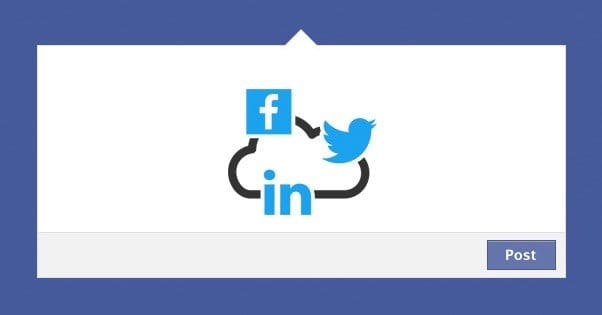 Written by ContentPowered.com
Written by ContentPowered.com
If you’ve spent any time managing a Facebook page, particularly a page for a business that doesn’t usually lend itself well to a personal conversation, you’ve probably encountered the content variety problem. It’s very tempting to limit yourself to sharing blog post links, but people turn their noses up at such self-promotion. Among other things, Facebook has been cracking down on people being too promotional outside of paid ads.
The point is, it’s impossible to get engagement and grow as a business when you’re just pushing your own links. It’s also impossible if you lack a variety of content. That’s why I’ve compiled this list of post ideas. Some of them won’t apply to your business or brand, and that’s fine. You really only need a dozen or so to rotate through. Pick the ones you like the best – or better yet, test them all and measure the ones that work the best – and put them into a regular rotation.
Despite what I said above, you do need at least a few of your own blog posts in the mix. There are a bunch of different “schemes” out there for how often you should post your own links. I like the 1/3/6 setup. In this scheme, out of every 10 posts, 1 of them is a focused sales and self-promotional post, 3 of them are posts about your brand or business that aren’t sales related, and 6 of them are other sorts of filler from this list, curated content, or something else. This doesn’t count your promoted posts, so keep that in mind. Also, don’t take it as gospel; feel free to change frequencies to determine what works for you.
1. Share an interesting statistic. This works best when the post you’re sharing covers a lot of detailed information; statistics on their own are dry and boring, but the right touch of analysis and exploration gives them the zing they need to spread and make you a resource.
2. Share a thought-provoking quote. A quick quote gives an idea of the salient points of a post without giving away the whole thing. Just avoid something that strays too much into clickbait. Marketers hate them!
3. Ask a question. The key to a good question here is one that’s targeted at a need common to your users, and that is covered by your article. Don’t ask a question and then not provide an answer, unless you’re running some sort of survey.
4. Share a value proposition. What is it your readers can expect to get out of your post? That’s what you need to tell them. When they know what they’re getting, they’ll be more inclined to go get it.
5. Share something that doesn’t quite make sense out of context. It could be a controversial opinion, it could be a bit of nonsense, whatever; just make it interesting enough that users want to find out what you’re talking about and thus go view your post.
Picture Posts
Graphical posts do very well on Facebook, particularly when compared with basic text and link posts. There’s a difference between posting a picture and posting a link with a preview image, though. In this section, I’m talking specifically about uploading a picture and centering your text as the picture caption. Just don’t include a link in the description and expect it to work; link posts are much better for link clicks than picture posts.
6. Post an image of your product in action. Even just pictures of happy “users” putting your product to use can drive engagement. Photos are some of the highest engagement content on Facebook, after all.
7. Post a choice. “Like if you prefer X, share if you prefer Y” is a good template, though Facebook might not care for it. You can also just ask people to comment which of two options they like best. This can be product related on a superficial level like color, or it can be unrelated, like local sports teams.
8. Post a caption contest. This isn’t going under the contest heading because it doesn’t even necessarily need a prize. Just run a weekly caption contest with the “prize” being a featured place in the heading for the next caption contest.
9. Post a fill in the blank sentence. It doesn’t have to be complex. I like the “When X happens, I feel ___” template. This gets people commenting with their one-word answers, which is completely unimportant to you. The important part is that they commented at all, which boosts their EdgeRank association with you, and means they see your posts more often.
10. Post a graphic that celebrates an ongoing holiday. For example, right now just about everyone is sharing Christmas-related images, and those that aren’t are generally sharing either political images or wintery images.
11. Post images that celebrate specific days that aren’t holidays. For example, you might post something with your logo or building heralding the anniversary of your business being founded. This is best done when you have a physical location and aren’t just an Internet brand, though.
12. Post images of company events you sponsored or helped host. You can include your brand in sponsored banners in the image, but it’s fine if you just show pictures of people having fun, or people getting some work done, or whatever best fits the tone of the event.
13. Post showcase photo albums. I like to post two or three images related to the album in the days leading up to the full album dropping, then post the full album with different images featured on the front. This tends to work best if you sell products that are beautiful to showcase graphically, though.
14. Post informative graphics. Now, I’m not saying full infographics here, because Facebook’s image display system doesn’t do well with long, tall graphics. I’m talking about smaller, more meme-like graphics that could be considered “infographics lite”.
15. Post Instagram-style artistic images with quotes plastered over them. Everyone likes a good motivational quote, right? Just don’t abuse this technique, because at the end of the day it doesn’t really benefit your brand, it just circulates a pithy image.
Facebook Contests
Running contests is a strategy that doesn’t work for everyone. You need to be careful to abide by the Facebook rules, and you need to make sure to give away something relevant to your brand and your audience. As they say, give away and iPad and the people you attract just want iPads; give away your product and the people you attract are fans.
It used to be that you had to run a tab app to run a contest on Facebook, but they have since lightened the rules somewhat. Now you can just run a contest on your news feed, so long as you have a fair means of entry and picking a winner.
16. Run an ultra-simple “like this post to enter to win.” If you want to boost up the engagement you’ll get, offer extra entries for shares and comments. That would total up three entries per person, not that it’s important to do the math. At the end of the day all you need to do is roll some dice to determine which category – like, comment, share – contains the winner, and pick the actual winner from that category.
17. Run a creative user submission contest. For example, the band Poets of the Fall released a new album and offered some graphical resources of the badge logo for the album art. They asked people to make something creative with the image, and they featured a different winner each week.
18. Run a “favorite quote” contest and ask people to comment with their favorite quote pertaining to a specific theme. You might do motivational quotes, or supportive quotes, or movie quotes, or song lyrics. Pick a theme and run with it.
19. Host a riddle contest. Post a question or a riddle and ask people to guess the answer. This is great when it either has a prize attached – like those “guess the number of marbles in the jar” games – or when the answer has something to do with an upcoming product announcement.
20. Host a crowdsourcing contest to determine something that goes into a product or an important company decision. Essentially, you can outsource market research under the guise of a contest, with the prize being what the majority of the people participating wanted in the first place.
Social Network Cross-Posting
There’s a lot you can do with posting from one social network to another, but they’re all similar strategies. I’m just adding this section to give you a few ideas on how to network your networks. The key to remember with cross-posting is that you shouldn’t be directly copying and pasting, just using the same theme and content across all networks. Think of it more as unified posting than cross-posting the same content.
21. Cross-post your tweets. Twitter tweets are super short and punchy, when done right, and that makes them ideal for Facebook. Just make sure to strip out any hashtags, because Facebook users hate hashtags in the posts they read. It’s been proven to actually lower engagement.
22. Cross-post compelling images from Pinterest. Pinterest is particularly great for infographics, so post a short preview version on Facebook and link to the Pinterest version in the description, and maybe even on the image itself.
23. Post a link to a longer post on Tumblr. Tumblr is great for specific audiences and not so good in general, so this one only really works when your audience is present on Tumblr and doesn’t hate you. If you’re a brand like McDonalds that tends to be vilified in certain circles, you won’t do well on Tumblr.
24. Share Instagram images on Facebook, Twitter, and anywhere else. Instagram is great for engagement but not for marketing, but you can use it as a testing ground to figure out which images are most compelling and share them elsewhere.
25. Upload Vines or other short videos from one service to the next. There are half a dozen microvideo hosts these days, with Vine being the most popular; they all provide fodder for Facebook videos.
Plain Old Text Posts
Text posts in general should be accompanied by links for the graphical element, but they don’t have to be. These basic text post ideas will give you plenty of options for filler in between more important posts.
26. Post a simple text poll. Polls can get you a ton of information, but they don’t all have to be serious. You can ask anything from favorite flavor of ice cream to specific feedback about a development issue with your product.
27. Share product features, unique things it can do, problems it can solve, or specifications that are important to normal users. Don’t go too deep into specifications, though; no one cares about the dimensions of your laptop unless you’re the Macbook Air and you’re selling it based on form factor.
28. Share stories of your workplace and how your employees take their day to day situations. Obviously, you’re going to want to limit this to good stories and stories that make you look good to the public. Try not to accidentally open yourself up to a lot of bad press.
29. Share insight into how your product is made. This works as an image post too if the process is particularly interesting to see in action, or video if you can make a “How It’s Made” sort of clip. Otherwise, a text post is probably fine.
30. Post to promote an event you’re hosting or have donated to support. Charitable donations in particular make for “feel good” situations. Try not to couple it with a marketing message; charitability works best when you don’t have an ulterior motive.
31. Post notifications and reminders of contests, sweepstakes, or offers you have going on off-site. For example, if you’re running a contest on your main site, you can post a text reminder of that contest. You can also post a reminder for a Facebook contest, though you should have the contest post pinned so it’s easy to find already.
32. Ask simple questions! Soliciting feedback from your users is great, and questions can help get you a lot of market research a lot easier than you can get it by paying a company to do it for you. I recommend trying out the “what’s your #1 problem with our product” technique to find avenues for support you might not be aware of.
33. Put forth a “controversial” opinion. Try not to make this actually dangerously controversial, though. I’m not talking about throwing your weight behind a political candidate or something. I’m just saying you might want to post about how cool cats are just to rile up dog fans.
34. Share a recommendation for a tool, a book, a reference, resource, or something else that can be helpful to all or a certain specific subset of your audience. Bonus points if you organically target it to that audience as well.
35. Post frequently throughout the day during an event you’re attending. Think of it like livetweeting, only you’re only sharing the most important of those tweets, say one in five or one in ten, depending on how much you tweet when at an event.
36. Share a meta-analysis of your past posts, either on Facebook or on your blog, showcasing what has been the most popular and most reviled. Don’t go by basic metrics, either; anyone can see a popular post, but what about the post with the most comments from women? That can be interesting to know.
37. Share tips for life-work balance or lifestyle. You’re a successful entrepreneur – or at least you play one on the web – so people will trust your advice because it’s apparently working for you. It doesn’t matter if it’s something you haven’t done.
38. Share trivia from the past history of your brand. This doesn’t work for new startups, but it can be a great trip down memory lane for older businesses or businesses with older clients.
39. Recommend someone, a brand or a business or just a person, who your users might want to consider following. Just make sure they aren’t someone who is going to supplant you. They should be complimentary, not adversarial.
40. Hold a debate on a common subject. Just make sure to moderate it, because debates can frequently get heated and go spiraling out of control.
Facebook Native Video
Facebook is, by some counts, the number one video host on the web, surpassing even YouTube. I still feel that YouTube is better for most cases, but Facebook video does have its advantages. Of course, there’s no reason you can’t use both. Host Facebook videos for Facebook and share the same video on YouTube for other
41. Show short videos or Vines of your products and how they are made or how they’re used. The ideal here is to keep them short so you’re not boring people who don’t want to know.
42. Share videos of people in your audience and their lifestyles. This works best for brands like Dollar Shave Club, Axe, or Redbull, all of which have cultures of adventure and activity; they can showcase awesome people doing awesome things and have it be relevant.
43. Share compelling commercials. Just because it’s on TV doesn’t mean you can’t post it online to. Get every bit of mileage you can out of those expensive productions. Just make sure it’s the kind of thing that people won’t be annoyed to see in another channel.
44. Share good, solid funny videos. You don’t even need to make them, just share funny videos you find that could give your audience a laugh. The trick is that you can’t do this too often, because your feed needs to largely remain on topic, so you need to make it good.
45. Share a video of the behind the scenes production of other videos, ads, or products. Something realistic is fine, but something over the top can be comedic and brilliant as well.
Curated Content
Ideally, a lot of the content you post will come from this category. So why is it so short? There’s really not that much to it. Find good content you didn’t create, that you think your audience will be interested to see, and post it. The following five tips are basically just ways to find that content.
46. Share trending or soon-to-be trending content from thought leaders in your industry. People always like to see content from a variety of sources, so make yourself the one place they can go to see all of it.
47. Share detailed evergreen resources that helped you, or that would have helped you if you were in the situation that would require that kind of help. You don’t need to be genuine, you just need to be helpful.
48. Share cool infographics and other images that are circulating around your industry, particularly those that are either very relevant to your business or are general interest enough to attract new users.
49. Share a case study or set of detailed statistics you – and others in your industry – can use as a resource for future blog posts. This works best if you then follow it up with a link to a blog post that used it, as well.
50. Share deals and specials being run by important figures or supporters in your industry. If basically everyone is running Hootsuite, sharing a deal that helps people subscribe or save while subscribing can be a great boon.










